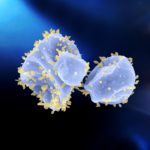Link to Pubmed [PMID] – 37325085
Link to HAL – pasteur-04131608
Link to DOI – 10.1093/ve/vead035
Virus Evol 2023; 9(1): vead035
Anelloviruses are highly prevalent in diverse mammals, including humans, but so far have not been linked to any disease and are considered to be part of the ‘healthy virome’. These viruses have small circular single-stranded DNA (ssDNA) genomes and encode several proteins with no detectable sequence similarity to proteins of other known viruses. Thus, anelloviruses are the only family of eukaryotic ssDNA viruses currently not included in the realm Monodnaviria. To gain insights into the provenance of these enigmatic viruses, we sequenced more than 250 complete genomes of anelloviruses from nasal and vaginal swab samples of Weddell seal (Leptonychotes weddellii) from Antarctica and a fecal sample of grizzly bear (Ursus arctos horribilis) from the USA and performed a comprehensive family-wide analysis of the signature anellovirus protein ORF1. Using state-of-the-art remote sequence similarity detection approaches and structural modeling with AlphaFold2, we show that ORF1 orthologs from all Anelloviridae genera adopt a jelly-roll fold typical of viral capsid proteins (CPs), establishing an evolutionary link to other eukaryotic ssDNA viruses, specifically, circoviruses. However, unlike CPs of other ssDNA viruses, ORF1 encoded by anelloviruses from different genera display remarkable variation in size, due to insertions into the jelly-roll domain. In particular, the insertion between β-strands H and I forms a projection domain predicted to face away from the capsid surface and function at the interface of virus-host interactions. Consistent with this prediction and supported by recent experimental evidence, the outermost region of the projection domain is a mutational hotspot, where rapid evolution was likely precipitated by the host immune system. Collectively, our findings further expand the known diversity of anelloviruses and explain how anellovirus ORF1 proteins likely diverged from canonical jelly-roll CPs through gradual augmentation of the projection domain. We suggest assigning Anelloviridae to a new phylum, ‘Commensaviricota’, and including it into the kingdom Shotokuvirae (realm Monodnaviria), alongside Cressdnaviricota and Cossaviricota.



